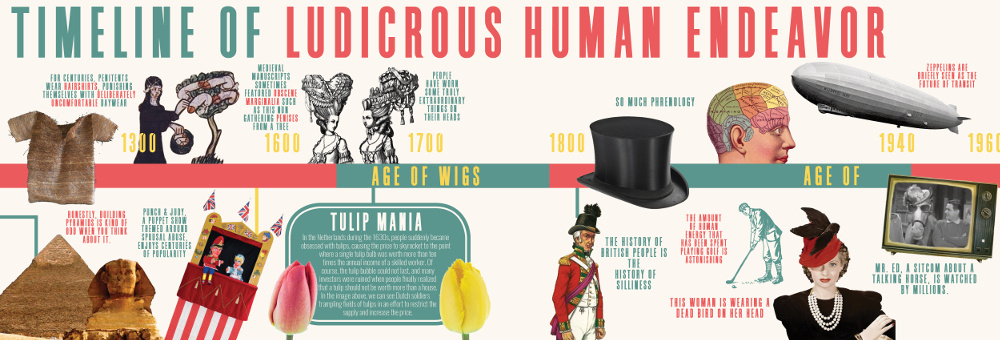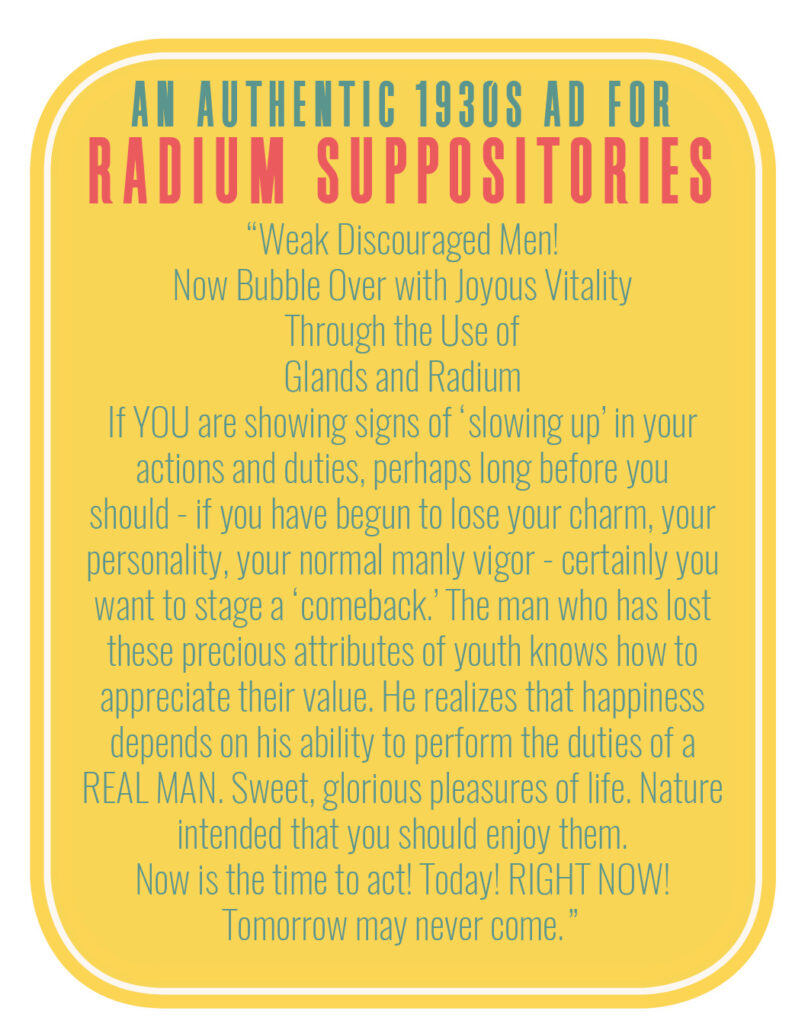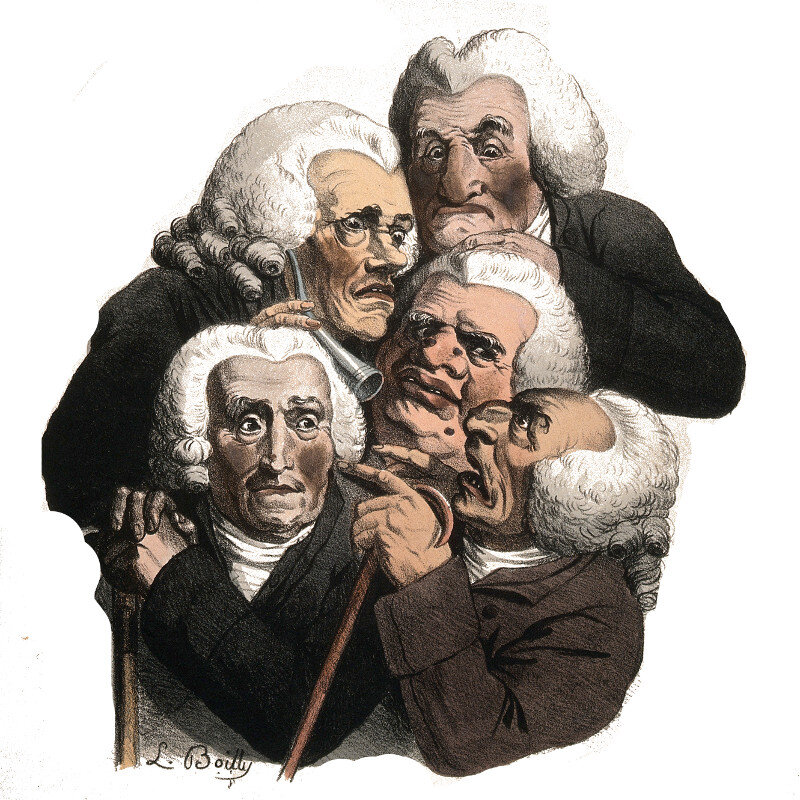
Is The Stupidity Of Our Age Unique?
To those worried that the Trump Era represents a unique low point in human rationality, take comfort: we’ve always been like this.
Broadly speaking, there are two popular views of human history. One view is that our ancestors were ignorant, fearful, and credulous. Then we discovered science, and medicine, and birth control, and since then, our society has gradually become more humane. The other view is that the human race used to be dignified, spiritually enlightened, and fully-integrated within our communities and our natural environment. Increasingly, however, in the unnatural pressure-cooker of modernization, we are all becoming more and more depressed and selfish. Among academic historians, these two views are known as the “Everything Is Fantastic Nowadays!” and the “Everything is Garbage Nowadays!” schools of thought, respectively.
This worldview split does not divvy up along clear political lines. In a gathering of miscellaneous lefties, if you were to expound on the virtues of a kinder, simpler, pre-industrial past, it’s a toss-up whether you’d be casually ID’d as a cooperative agrarian socialist or denounced as a crypto-fascist. Likewise, if you were to make an impassioned plea for the importance of scientific knowledge and its ability to solve certain kinds of human problems, you might be hailed as a free-thinker, or you might be written off as a liberal technocrat. It’s all very confusing.
Current Affairs is not here to adjudicate whether the past was good or bad. In our view, the past had many things going for it. There were more trees and animals, the buildings were more attractive, old people weren’t put into containment silos, and everybody got more exercise (albeit often via war). At the same time, of course, the past was a fucking nightmare. Lots of people died from infection, childbirth, or literally pooping themselves to death. Murder was much more readily accepted as a reasonable form of dispute resolution. The weak were trampled upon in proportionally greater numbers. People had to farm all the damn time, regardless of whether they enjoyed manual labor, and even if they were scared of earthworms.
One thing we can say with reasonable confidence, however, is that while the ways human beings have shaped their environments have changed over time, human beings themselves, with minor variations, have always been just the same. We are the blundering, dyspeptic, misbegotten wretches that our forefathers were. The décor changes, but the humans remain the humans.
This realization should frighten us, of course, because the history of civilization is largely the history of organized atrocities. But in another sense, it should also encourage us. There is a prevailing, pessimistic view—held by impatient, forward-looking futurists and nostalgic traditionalists alike—that the people of the 21st century are uncommonly stupid. If we don’t keep the wheels of scientific and educational progress rolling—or, alternatively, if we don’t return to the golden age when People Knew How To Think—the human race is doomed, they say. Here comes the “idiocracy”: we are drifting toward an eternity of pudgy torpor, distracted by useless plastic whirligigs and reality television. It is the Age of the Fidget Spinner. Our brains have turned to soft cheese, our culture is decadent and superficial.
This, as it turns out, is all nonsense. There seems to be a vague notion that people used to sit around making star charts and reading edifying books until somebody invented video games and reality television. But the truth is that people of all classes and educational levels have always been highly susceptible to bullshit. They have always enjoyed stupid pastimes and spent money on useless items. They have always talked trash about each other, and taken delight in one another’s misfortunes. They have always been celebrity-obsessed. They have always sought unsavory outlets for their sexual and violent fantasies. Is any of this laudable? Not especially. But is any of it new? Not at all. Nor does our history suggest that these facts of human nature are ever likely to change. The most we can do is just continue to muddle through, and try, day to day, to be the least ghastly versions of ourselves we can.
Ah, but you don’t believe us! Then let us take a peek into the historical offal bucket and see what our predecessors were up to.

1. VIOLENCE AS ENTERTAINMENT
We hear constantly that people these days are Increasingly Desensitized To Violence. Now, don’t get us wrong: treating violence as a form of entertainment is, at best, morally dubious. Just because there isn’t empirical evidence to suggest that watching Saw or playing Saints Row turns preteens into spree killers doesn’t mean that these things encourage us to be our kindest, gentlest selves, either. Small children are probably not unaffected by using their CGI avatars to hack sex workers to death. Torture flicks are grotesque, and likely deaden people’s ability to empathize with the real suffering they see on the news. Laughing when people are injured or humiliated in YouTube videos or reality TV shows is sociopathic and creepy. None of these things are good, and our society would undoubtedly be better off without them.
Nonetheless, our era is really no more or less fixated on violence than previous ones. From folk music and fairytales (which are just about as depraved, sex-and-violence-wise, as anything modern media has on offer) to cockfighting and gladiatorial games, humans have been drawn to mindlessly violent forms of entertainment since the dawn of time. Public executions were not only well-attended in the early modern period, but did a roaring trade in souvenirs, including mocking or sentimental broadsheet ballads about the doomed prisoners. “Punch & Judy” shows, which have been around for about 400 years, are domestic-violence setpieces in which a married couple batters each other mercilessly for any goddamn reason the puppeteer can think of. If you think the present popularity of zombie films and Grand Theft Auto is disturbing, remember that people literally used to entertain themselves by watching the torture of live badgers.

2. NEUROSES AND DELUSIONS
What with capitalist oppression, big pharma, and mommy message boards, it is said that we now live in an unusually fearful and hypochondriacal age. People are suggestible, and eager to live up to societal expectations, and the strain of modern life is making them lash out in bizarre ways. Cell phones will give you brain cancer! Vaccines will give you autism! Every other physical substance known to man will give you asthma, allergies, and/or ADHD! Everybody nowadays thinks they (or their children) have some devastating, incurable ailment, thanks to amateur WebMD sleuthing, gullibility, and a growing trend towards neurotic self-absorption.
Alas, we really can’t pin this one on the internet, because weird mass delusions and medical anxieties are apparently just Something We Do as a species. For example: between the 14th and 17th centuries, there were many recorded instances of something called Dancing Mania, where mobs of people were suddenly overcome by the uncontrollable urge to dance for hours at a time, sometimes until they broke their ribs and died. (The Strasbourg Dancing Plague of 1518 was said to have killed fifteen people a day.) Or take the strange outbreak of cat-like meowing amongst a convent of nuns in 19th-century France, which only ceased when the police appeared on the scene and thrashed the nuns into submission. In the late medieval and early modern period, a fashionable neurosis amongst the wealthy was called The Glass Delusion: its most famous sufferer was Charles VI, king of France from 1368 to 1422, who believed that his entire body was made of glass, and wore special clothes to prevent himself from being shattered. One 17th-century Venetian sufferer, meanwhile, was so convinced that his arse was made of glass that he refused to sit down “lest he should have broken his crackling hinderparts.” As hysterias go, our era actually seems comparatively tame.
3. CELEBRITY OBSESSIONS
Oh God, you think people are into celebrities now? Athletes at the original Olympic Games in 700 BC used to rub themselves down with olive oil and then, after the day’s competition, scrape the disgusting residue off their bodies and sell it to their adoring fans. Poetry groupies in the early nineteenth century were so obsessed with Lord Byron that the term “Byromania” was coined; and the disquieting rate of mortality among Romantic poets, far from discouraging the public, merely gave rise to weird tuberculosis-inspired fashions designed to make the wearer appear tantalizingly close to death. Later in the century, when the widely-adored Princess Alexandra of Denmark developed a slight limp after a bout of rheumatic fever, her fans took to wearing mismatched shoes and walking with canes to emulate her trademark walk.
4. HEALTH AND DIET CRAZES

Our age is sometimes mocked for its spirited embrace of the organic and gluten-free, or its excessive medication. But prior times had their own mad ideas about health. A Victorian health food proponent named Horace Fletcher pioneered “Fletcherism,” which encouraged people to chew their food 100 times before swallowing it. Fletcher was nicknamed “The Great Masticator” and declared that “Nature will castigate those who don’t masticate.” Fletcher’s teachings were embraced by figures from Upton Sinclair to John D. Rockefeller, and even Franz Kafka is alleged to have given it a try.
At least Fletcherism was harmless, if a bit disgusting. More horrifying was the “Voronoff Technique” pushed by French surgeon Serge Voronoff in the 1920s and 30s. The technique involved grafting pieces of monkey tissue onto men’s testicles, which was alleged to increase their sexual prowess. Many millionaires underwent Voronoff’s procedure, having pieces of monkeys’ reproductive parts attached to their own. During the Golden Age of Snake Oil Products, all kinds of ordinary items were billed as having medicinal properties. Everyday table salt was bottled and sold as “Effervescent Brain Salt.” And in the opening decades of the 20th century, people became convinced that radium was good for you, putting it everywhere: in their hot chocolate, in their swimming pools, and up their butts. Yes, the Radium Suppository was a real product.

5. ABSURD FADS
It’s true that in the last few decades, humans have indulged in some senseless fads, from the Beanie Baby craze of the late 90s to the brief popularity of “Silly Bandz” a few years ago. Again, though, nothing new. Think of how bizarre it is that wigs caught on. There was a long period of time before everyone started wearing powdered wigs. Then, in the late 17th century, people started to wear elaborate powdered wigs. They did so for over a hundred years. And then they stopped. Nobody ever gave a justification for it. It just happened.
Other fads were equally bizarre. People collected religious relics with unusual zeal, and a piece of a saint was a prized possession. (One especially rare and treasured relic was the “Holy Prepuce,” alleged to be a piece of Jesus’ foreskin.) A kaleidoscope craze swept Victorian England, and for a time you couldn’t walk through the streets of London without seeing people with kaleidoscopes held to their eyes. And, of course, we can’t forget the Dutch tulip bubble of the 17th century, when a collective obsession with tulips suddenly drove the prices sky-high.

Or consider ring-turning. From NPR:
In New York, according to a New York newspaper story reprinted in many papers — including the Cincinnati Enquirer on Oct. 21, 1893 — young women in offices were acting mysteriously by reaching out to men they met and turning the rings on their fingers. “It’s the craziest thing you ever heard of,” one office worker told a reporter. “The idea is this: If a young lady meets a young man with a ring on his finger, she is to turn the ring two or three times. Then with another man the same thing, and so on until she has turned rings to the extent of about 24 times. Then the next thing to do is to look for a married person, male or female, wearing a marriage ring. This ring she is to turn twice, and the next man she shakes hands with will be her husband.” The craze was such a time suck at one particular New York establishment that management was forced to post a warning: “Any employee caught practicing the ring turning business will be immediately discharged.” A business owner said: “The time we have lost through it would amount to days.”

6. THE COMMENTS SECTION
Everyone knows that online comments sections are a wasteland and that everything said in them is idiotic. But the lowest common denominator has been pretty low for a long time. From the preserved graffiti on Pompeii’s bathrooms, we know that people have enjoyed trash-talking, poop jokes, and bragging about their sexual prowess for millennia. Some sample quotes from the bathroom walls of ancient Rome:
Secundus defecated here
Defecator, may everything turn out okay so that you can leave this place
The one who buggers a fire burns his penis
Weep, you girls. My penis has given you up. Now it penetrates men’s behinds. Goodbye, wondrous femininity!
Amplicatus, I know that Icarus is buggering you.
One can see all of this as either encouraging or discouraging. On the one hand, over thousands of years, we haven’t really gotten any worse. On the other, we haven’t gotten much better either, even as the faces of the individual celebrities have changed and the kaleidoscopes have been replaced with Silly Bandz or fidget spinners. You can either take comfort in or be embarrassed by the durability of human ludicrousness.




